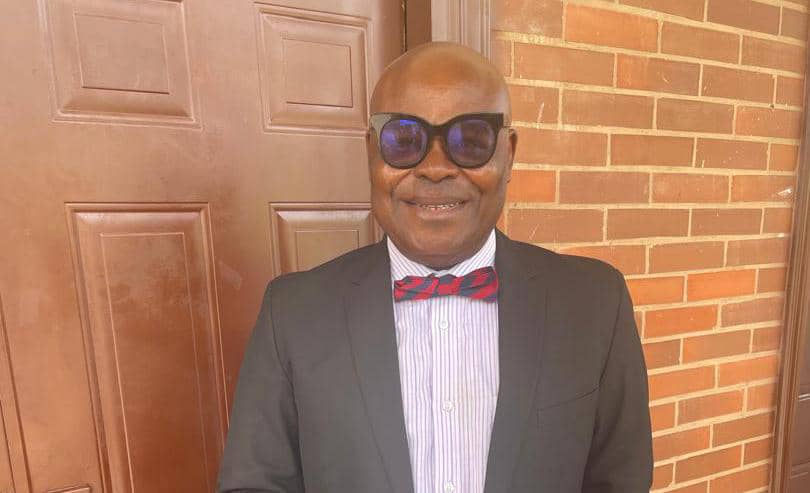
TERTIARY HEALTH CARE AND SOCIOECONOMIC IMPERATIVES IN ONDO STATE – The Implications of the Establishment of the Futa Teaching Hospital, Akure
By Olusegun Ojo (CMD, FUTATH)
Health is wealth, so goes the age-old aphorism. The diversity and burden of infirmities and medical emergencies would understandably parallel the density of any human community. Thus, Health care provision in terms of infrastructure and personnel is expected to parallel the population figures of the community. Therefore, easy access is key to the prevention of the unnecessary loss of lives, and man-hours would be kept at a level conducive to optimal economic activities and prosperity of the community.
In earlier times, the distribution of tertiary teaching hospitals had followed the distribution of the Federal Universities in the Country. Thus, in the western part of the Country, the Lagos University Teaching Hospital, the University College Hospital, the Obafemi Awolowo University Teaching Hospital and the University of Ilorin Teaching Hospital had existed. Similar wisdom had informed the distribution of tertiary Health Institutions in the other geographical regions of the Country as well.
These Institutions were far apart and the need to bring Tertiary Health Care closer to the needy populations in between them must have informed the creation of Federal Medical Centres in every State of the Country subsequently. The States that were hosts to the existing Federal Teaching Hospitals automatically got double blessing – they got one extra Tertiary Health Institution together with the newly allocated Federal Medical Centre. Ondo State had got only one federally-funded tertiary health institution so far since its creation in 1976 – The Federal Medical Centre, Owo.
The Federal Medical Centre (FMC), Owo, remains the only Federal Tertiary Health Institution in Ondo State. Its geographical location, perhaps premised on the anatomy of the old Ondo state, is disadvantageous to the new Ondo state, which has the bulk of her population located in Akure. Akure is home to the highest concentration of the Ondo State population and, because of poor road access, it is not ideal to have the highest grade of health provision by the Federal Authorities located away from the main mass of the people of Ondo State, which is Akure, and its satellite settlements.
Motivated by the need to provide comprehensive health care delivery to their teeming populations, almost every State Government in the Country had made attempts at establishing State Teaching Hospitals alongside their State Universities. In the Western part of the Country, Lagos, Ogun, Oyo and Ekiti States have blazed the trail. When it was almost belated, the Ondo State created its own Teaching Hospital but, in Ondo town, away from Akure, the State’s seat of Government, centre of commerce and, thus, the State’s population hotspot.
Elsewhere, Ekiti, Kano, Niger, Kwara, Benue, Bauchi, Ebonyi, Anambra, Abia, Rivers, Delta, Edo, Bayelsa and Enugu have developed or are in advanced stages of establishing their respective State Tertiary Health Institutions. Many of these Institutions already are University-associated Teaching Hospitals. We note that in all these States, the Teaching Hospital facilities are sited in their respective capital towns, where the highest concentrations of their populations live. Easily, it can be seen that Ondo State fares poorly on the league table of States of the Federation when it comes to the distribution of Tertiary Health Institutions.
AKURE, HER DEMOGRAPHY AND HEALTH CARE NEEDS
Akure, the Administrative Headquarters of the Ondo State Government, lies about 7°25’ north of the Equator and 5°19’ East of the Meridian. It is about 700 km Southwest of Abuja and 311 km north easr of Lagos . Residential districts are of varying density, some area such as Arakale, Aiyedun Quarters, Ijoka, and Oja-Oba consist of over 200 persons per hectare, while areas such as Ijapo Estate, Alagbaka Estate, are between 60-100 persons per hectare. The town is situated in the tropical rainforest zone of Nigeria.
Being primarily an agrarian population, Akure is connected to an extensive reticulation of small communities on all sides of the township. Many of these satellite communities have since merged with the main town and contributed to the population explosion of the post-1976 era. Never mind that the health care provision has not kept pace with the breath-taking population growth.
In the matter of Educational Institutions, Akure has famous Secondary Schools like St. Thomas Aquinas College, Oyemekun Grammar School, St. Louis Grammar School, and Fiwasaye Girls’ Grammar School etc. The town is also host the Federal Government Girls’ College and St. Peter’s Unity Secondary School, as well as the Nigerian Police School amongst many others. It has tertiary Educational Institutions which include: the Federal University of Technology, Akure and Federal College of Agriculture and 323 Artillery Brigade of the Nigerian Army.
Akure Metropolis spans two Local Governments namely: the Akure South and Akure North Local governments. Between them, with a population which was less than a million by 2006 National Population Census is a rapidly growing metropolis and the population is now over a million by 2017 projection and topped the projected national average of 3% per annum. The population has a cosmopolitan mix, being a nodal town that lies on the Lagos – Abuja land route and a notable alternative trade route between the West and East of Southern Nigeria. Akure is a peaceful and accommodating city
The mainstay of health care provision in Akure has remained the UNIMED Teaching Hospital, more popularly known as the Akure State Specialist Hospital, and the network of other Government Health Centres and private clinics.
The Akure State Specialist Hospital, which was established by the colonial authorities, was designed to cater for the population of the old town. Its infrastructure has only little expanded since the Ondo State was created in 1976. Since then, the population has burgeoned to at least 10 times its size as at 1953, when the hospital was commissioned.
The upgrade of the Akure from a Provincial Headquarters that it was in 1953 to that of a State Administrative Headquarters in 1976 has occasioned a rapid growth in her population. The population growth and expansion of the physical size of the township has exceeded the national average. In consonance with this, the other supportive facilities such as roads, schools, sources of power and water supply ought to grow to meet the demands of the burgeoning population. There has been no notable commensurate growth or increase in the number of Government-funded health facilities: The old Akure General Hospital has continued to be the main source of major health care support to the overgrown, and still growing, population.
With her current establishment of health manpower, equipment and services the Akure State Specialists Hospital remains the premier healthcare institution in Ondo State. Given the fact that its capacity is far outstripped by the size of the catchment population in number, physical reach and access, the government of His Excellency,
Hon. Lucky Orimisan Aiyedatiwa has done the most wonderful and reasonable thing – to cede the hospital to the Federal Government so it could be upgraded to the status of a Federal Teaching. This would doubtless improve on the current facilities and establishment and service capacity of the Hospital. What is more, the building of a brand-new Federal Teaching Hospital from scratch is, most happily, implicit in the new deal.
The Implications of the coming Change
It is to be expected that, to be fit for its purpose, fundamental structural and organizational change would have to underpin the transition and transformation of the Hospital into a Federal-type Teaching Hospital. These changes would be fundamental because they would allow the new hospital to foster an attitudinal re-orientation and work ethic change that would allow for the upcoming investments to position the hospital in a manner that would allow the hospital to meet its new mandate to the people.
Obviously, with the coming change, the hospital will transition from a general-service hospital to a Structured Tertiary Academic Medical Center. The purpose of the change is to ensure efficient and reliable service delivery, staff welfare, academic excellence, transparency and accountability to patients and customers.
The coming change will open opportunities for federal and development partners’ funds to be ploughed in for the largest infrastructure revamp in the hospital’s history. This would include funds for such undertakings as Construction Projects including new outpatient clinics, new inpatient wards, a modern emergency department. pathology laboratories complex, Modular Operating Theatres, Radiological diagnostic imaging center that would house CT scans, MRI, digital X-ray machines, Adult Intensive and Neonatal care unit. Also, we would able to upgrade the equipment armamentarium of the hospital to include echocardiography and endoscopy units digital patient monitoring systems as well as put the hospital on the way to meeting national and international standards.
Importantly, we would be able to embark on developing our people. It would become possible for staff members to be supported to specialise and grow their skill in their specialty as the practice is in this modern era. Staff development programs such as orientation and refresher courses as well as certificate courses in hospital administration, safety, and specialty nursing patient care as well as local and international fellowships as well as sponsorship for conferences and continuous professional development
Vistas would be open for opportunities for partnering with professional bodies and institutions such as the West African and Nigerian Postgraduate Medical Colleges, Nigerian Medical Association, Nursing and Midwifery Council, Medical Laboratory Science Council of Nigeria and others to produce healthcare service leaders who would ensure the sustenance of high quality and consistency.
The hospital will become a leader in research and a renown clinical referral centre for tropical diseases, maternal and child health, non-communicable diseases (diabetes, cancer, hypertension), mental health and emerging and neglected tropical diseases. To achieve these, we shall engage in the creation of research centres, establish Ethics Committees for clinical trials, support Staff in making international publications and deliver papers at conferences; We would also be able to develop partnerships with universities and foreign hospitals. We would encourage innovation in treatment, diagnostics, and public health policy development.
It would become possible to have active Health Education and Outreach programmes to reach underserved communities through Mobile clinics, Health fairs, School health programs, public health jingles and radio shows as the hospitals’ Corporate Social Responsibility (CSR)










